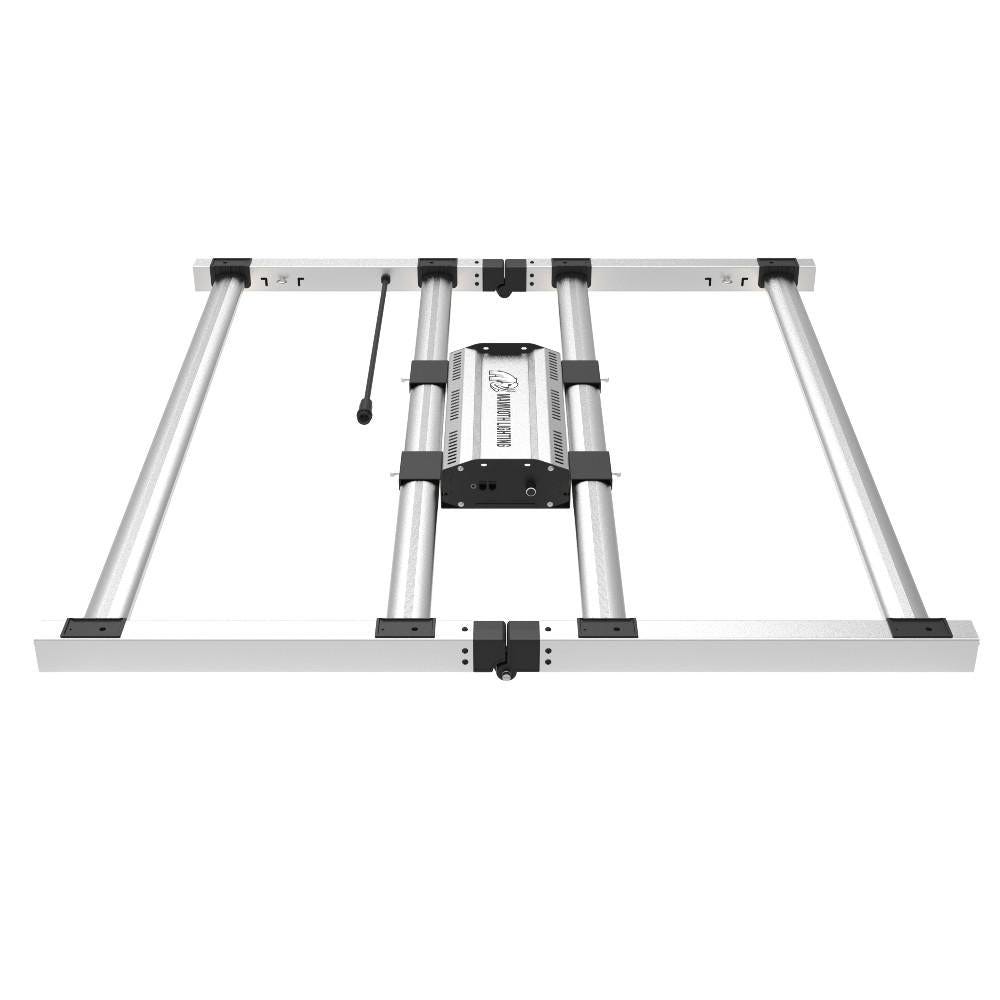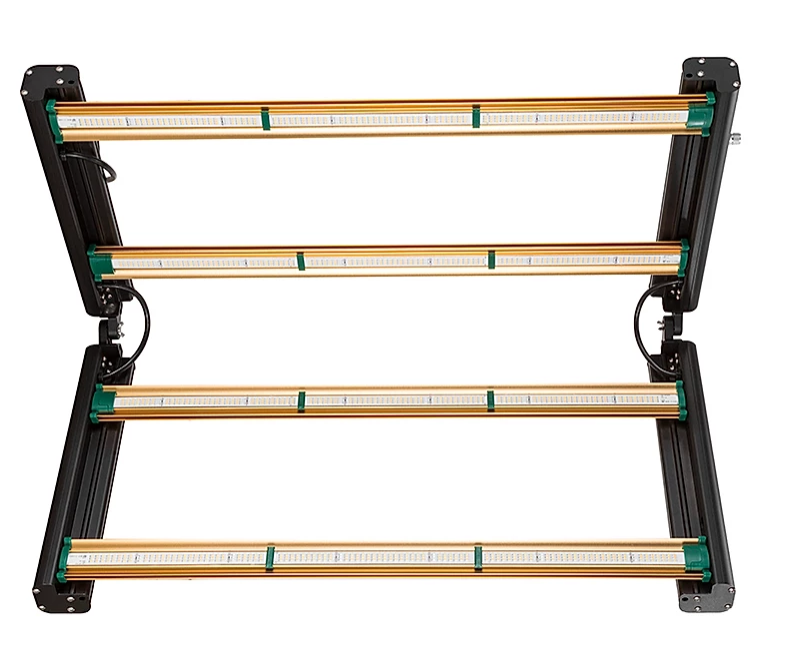- Home
-
SHOP ECO FARM
- ECO Farm Grow Lights
- ECO Farm LED Grow Lights
- ECO Farm Quantum Board
- ECO Farm Samsung LED Grow Lights
- ECO Farm COB Grow Lights
- ECO Farm Commercial Lights
- ECO Farm Supplemental Grow Light
- ECO Farm Fluorescent grow lights
- ECO Farm HPS & MH Grow Lights
- ECO Farm CMH Grow Lights
- ECO Farm HID/CMH Bulbs & Ballasts
- ECO Farm Grow Tents & Kits
- ECO Farm 2x2ft Grow Kits
- ECO Farm 3x3ft Grow Kits
- ECO Farm 3.3x3.3ft Grow Kits
- ECO Farm 4x4ft Grow Kits
- ECO Farm 5x5ft Grow Kits
- ECO Farm Grow Tent - Standard Style
- ECO Farm Grow Tent - Extension & Roof & Lodge Style
- ECO Farm Extraction & Harvest
- ECO Farm Rosin Press Machine
- ECO Farm Dry & Wet Trimmers
- ECO Farm Oil Accessories
- ECO Farm Medicinal Plants Grinder
- ECO Farm Medicinal Plants Containers
- ECO Farm Medicinal Plants Dryer
- ECO Farm Refrigeration Dryer
- ECO Farm Climate Control & Other Accessories
- ECO Farm Inline Duct Fans
- ECO Farm Oscillating Fans
- ECO Farm Exhaust Fans
- ECO Farm Air Filter
- ECO Farm Duct Muffler
- ECO Farm Ventilation Kits
- ECO Farm Plant Humidifiers
- ECO Farm Plant Dehumidifiers
- ECO Farm Hydroponic Accessories
- ECO Farm Other Accessories
- ECO Farm Hydroponics Microscopes
-
TOP BRANDS
- Grow Lights Brands
- Adjust-A-Wing
- Apollo Horticulture
- Bestva
- Black Dog LED
- California Lightworks
- ChilLED Grow Light
- Eco Farm
- HLG - Horticulture Lighting Group
- Kingled
- Kind LED
- Mars Hydro
- Morsen
- Neilo
- NextLight
- Phlizon
- PlatinumLed
- Roleadro
- Optic LED Grow Lights
- ViparSpectra
- Vivosun
- EYE Hortilux
- IPOWER
- NanoLux
- Phantom grow light
- Gavita grow lights
- Grower's Choice
- Lumatek
- Maxibright
- Yearld Pro
- ThinkGrow
- Crecer Lighting
- Green Sunshine Electric Sky
- fohse aries
- loriflux
- luxx
- fluence
- iluminar
- Lex
- LTC
- Rayonled
- FGI
- PHOTONTEK
- Grow Tents & Kits Brands
- Apollo Horticulture
- Black Box
- CoolGrows
- Eco Farm
- GrowLab
- Gorilla Grow Tents
- Mars Hydro
- Quictent
- Secret Jardin
- Unit Farm
- TopoGrow
- VIVOSUN
- Topolite
-
COMPANY INFO
-
COOPERATE WITH US
- Blog
Mammoth Lighting Fold Series MF04 LED Grow Light VS Grower's Choice ROI E420
August 26, 2022
If you like to grow plants indoors, you need to make sure they have all the basic requirements they need to grow. In addition to water and nutrients, plants need enough light to grow.
Growing plants indoors? You need to find the best light for your plants. In fact, you have several options, but LED grow lights are the most popular type of lights used for indoor growing.
We’ll detail the benefits of using the best LED grow lights below and what else you need to know before you buy, but first let’s cover why they’re so popular.
Why buy LED grow lights?
While you may need artificial light, you may be wondering which one to buy. There are various types on the market, from fluorescent lamps to HID and HPS variants and more. There are tons of options, so why choose LED grow lights over everything? Well, here are the advantages of all the other different types of lights that LEDs offer, and why we think they are the best.
First, they consume far less power than most other types of lights, making them very energy efficient. However, this also affects their lifespan, making them thousands of hours longer than HID or HPS lamps. They rarely stop working completely, but usually reduce the brightness over time. If you need 24/7 access to your lights, LEDs are the right choice.
In addition to this, they can use a specific spectrum that matches the optimal absorption range of various plants, which means they are more efficient than HPS lamps of comparable brightness. They are also more versatile in terms of placement, as they can be used as ceiling lamps, floor lamps, wall lamps, whatever you need, and they can even be placed in awkward places with non-square units.
Another reason they’re so much better than other types of lighting is that they emit far less heat, which means you don’t need to use them in ventilated areas only, and you don’t have to put any extra effort into cooling your plants.
While the initial cost of LED grow lights is higher, it pays off hugely over time. They’re still a new technology so will drop over time and they’ll get better than HPS lights.
Mammoth Lighting Fold Series MF04 LED Grow Light (Veg)

Features:
Mammoth Lighting was developed by indoor growers after years of careful trial and testing. Scientifically engineered to provide the highest level of PAR output and balanced coverage in LED growth markets. Mammoth LED grow lights are made of high-quality Samsung diodes. The light contains a continuous range of wavelengths from blue and green to red, creating a light mix that matches natural sunlight. Mammoth customizes its spectrum to optimize plant growth and increase yields while consuming less energy and reducing operating costs compared to traditional gardening techniques.

Features:
Utilizing Grower’s Choice proven 3K full PAR spectrum, this LED is perfect for professional cultivators and grow enthusiasts alike, who require a powerful LED fixture with a lower profile frame. This new, sleek LED is also perfect for hobby growers or entry-level professional cultivators who want to maximize their yields while working with limited space. The ROI-e420 is controllable with Grower’s Choice Master Controllers and is compatible with all quality master controllers. Cultivators can set the fixture to turn off and on at desired times, program sunrise/sunset settings, program dimming options and set protective fail-safes to dim or turn off the fixture in the event of excessive room temperatures, such as in the event of an HVAC failure, potential saving gardens from heat damage.
What Makes the Best LED Grow Light?
Below are the features you should expect to find in high-quality LED illumination for growing plants.
1. Color Spectrum for Plants
Why do plants grown outdoors do well? That’s because the sunlight contains full-spectrum colors the plants need for growth and development. This means that you should look for a model with such capabilities. Full-spectrum LEDs provide all the important hues and colors for different stages of plant growth. The most important colors are:
Blue light. This enables the plants to thrive during their early stages. They are able to absorb it during their vegetative stage.
Purple light. The purple color is also necessary for the vegetative stage. However, it is not very effective for photosynthesis like blue illumination.
Red light. Plants need this color in their later stages of development. It also helps buds to flower.
White light. You can use the white color alone since it has all the color spectrums required by plants in all their development stages.
2. Light Intensity
The light intensity of LED grow lights is determined by Photosynthetically Active Radiation (PAR). The PAR is usually the type or amount of illumination that LED grow lights produce. In this way you can regulate the photosynthetic features of sunlight that plants need.
The ordinary bulbs produce less PAR. It explains why they are not commonly used in indoor gardens.
Light intensity is the measure of the amount of illumination that can produce photosynthesis. Photosynthesis is a series of chemical reactions that are responsible for producing glucose and oxygen from water and carbon dioxide. The reaction requires illumination energy in order to work.
Understand the Intensity and Its Impact
You can determine intensity in 2 ways:
Wavelength
Photosynthetically Active Radiation (PAR).
The wavelength, measured in nanometers, determines what part of the spectrum a plant uses for photosynthesis. The PAR determines how much energy there is in those wavelengths.
3 Types of PAR
There are three main types of PAR: blue light, red light, and infrared (IR).
Grow illumination with a high PAR rating fits better for growing plants. These ones are the brightest and they are very good for plants since they greatly enhance the development of leaves. They also have the required amount of photons that plants need for flowering and growth.
Lack of enough luminosity may cause the leaves to turn yellowish. You should check the recommended footprint by the manufacturer. This is the easiest way to know the best grow illumination that will be suitable for your plants.
4. Grow Light Power Consumption
The good news is that these types of lights are very cost-effective. You need little power to run them. However, their power consumption differs from one model to the other which means that some consume a lot of electricity. A model that produces bright light without consuming a lot of electricity can be a great choice.
The amount of power the unit consumes is determined in watts. In other words, models with high wattage are likely to consume more power. However, models with low wattage may not provide the required level of brightness. A model with at least 1000W will be a great option.
5. Lighting Footprint
Even if brighter illumination may help your plants to produce better yields, sometimes it may be very dangerous and may cause your plants to dry due to too much heat. Therefore, you need to determine the best amount of illumination that is suitable for your plants.
To do this, measure the size of the area you would want the light to project. This area is known as the footprint. LED lights can only cover a limited area or footprint.
Therefore, you need to ensure that the model you have chosen
matches the area you would like the light to cover.
In short, the illumination footprint provided by the LED luminosity should not be more than the growing space because this might cause the leaves to bleach or curl. It will also be a waste of electricity. You can check this information from the details provided by the manufacturer.
6. Plant Photoperiods
This simply refers to the amount of light you give the plants within 24 hours. When growing plants outdoors, they have a limited photoperiod since they use sunlight. In most cases, the plants will be subjected to sun for 24 hours during the day or less depending on the season.
Growing plants indoors allows you to extend the photoperiods of plants according to your requirement since you can leave the LED grow illumination even for 24-hours.
As a result, plants grown indoors may grow faster than those grown outdoors especially during the winter.
Conclusion
LED lighting has many advantages in indoor gardens compared to other types of lighting. They are very effective because they can produce as many colors as the plants need. If you’ve been thinking about buying the right model for your indoor garden, we hope you’ve learned something from this guide.
